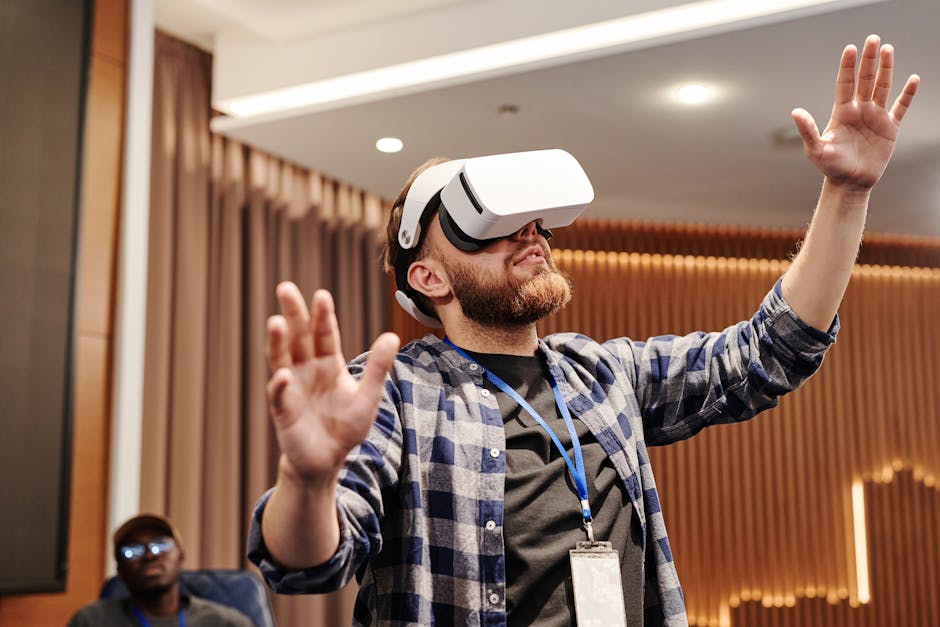Crafting Your Lean Start-up’s Initial Product: A Guide
You’re ready to launch your lean start-up, but did you know that 90% of start-ups fail? Don’t be a statistic. Crafting your initial product with a lean approach is crucial for success.
This guide will show you how to:
- Identify market needs
- Define your MVP
- Rapidly prototype for iterative development
Get ready to innovate and disrupt the market with your lean start-up’s initial product.
Key Takeaways
- Lean start-up methodology emphasises validating ideas quickly and efficiently through iterative development.
- Thorough market research reveals challenges and frustrations of potential customers.
- Building a minimum viable product (MVP) tests assumptions, gathers data, and makes informed decisions based on real-world insights.
- Rapid prototyping and iterative development are crucial for developing initial product.
Understanding Lean Start-up Principles

To successfully craft your lean start-up’s initial product, you must start by understanding lean start-up principles. The lean start-up methodology emphasises validating ideas quickly and efficiently through iterative development. By implementing agile development and lean principles, you can streamline your product development process, reduce waste, and improve responsiveness to market feedback. This approach encourages you to build a minimum viable product (MVP) to test your assumptions, gather data, and make informed decisions based on real-world insights.
Agile development complements the lean start-up methodology by promoting adaptive planning, evolutionary development, early delivery, and continuous improvement. It enables you to respond to changes in customer needs and market dynamics while maintaining a focus on delivering value. Embracing lean principles such as eliminating waste, amplifying learning, and empowering the team can foster a culture of innovation and efficiency within your start-up.
Understanding lean start-up principles is essential for laying a strong foundation for your initial product. It empowers you to navigate uncertainties, prioritise learning, and optimise resource allocation, ultimately increasing your chances of creating a successful and sustainable business.
Identifying Market Needs and Pain Points

First, identify the specific market needs and pain points your target customers are experiencing. Conduct thorough market research to understand the challenges and frustrations your potential customers face. Look for patterns and common pain points that your product or service can address. By gaining a deep understanding of customer pain, you can tailor your solution to directly alleviate these issues, making it more appealing and valuable to your target market.
Market research is crucial for uncovering unmet needs and pain points that present opportunities for innovation. It enables you to gather insights into what customers truly desire and where current solutions are falling short. This information will guide the development of your initial product, ensuring that it resonates with your target audience and offers a compelling solution to their pain points.
Defining Your Minimum Viable Product (MVP)

Consider the essential components of your minimum viable product (MVP) to validate your start-up’s key assumptions and gather valuable feedback from early adopters. Prioritising features for your MVP is crucial. Identify the core functionalities that are essential for your product to deliver value to users. Focus on the features that directly address the key pain points and needs of your target market. By prioritising these features, you can ensure that your MVP efficiently serves its purpose of validating your start-up’s assumptions and attracting early adopters.
User validation is a critical aspect of defining your MVP. Your MVP should be designed to elicit feedback and validation from users. It’s essential to create a product that’s simple yet functional enough to engage early adopters and gather their insights.
Keep in mind that the primary goal of your MVP is to validate your start-up’s value proposition and assumptions through real user interaction and feedback. By prioritising features and seeking user validation, you can create an MVP that effectively serves its purpose in the lean start-up process.
Rapid Prototyping and Iterative Development

When developing your initial product, rapid prototyping and iterative development are crucial.
By creating fast feedback loops, you can gather valuable insights and continuously improve your product.
This approach allows you to focus on delivering a minimum viable product that meets the needs of your target audience.
Fast Feedback Loops
When creating your initial product for your Lean Start-up, it’s crucial to utilise fast feedback loops through rapid prototyping and iterative development. Fast feedback from customers provides valuable insights that can guide your product’s evolution.
By rapidly prototyping and iterating based on customer insights, you can ensure that your product meets the needs and preferences of your target audience. This approach allows you to test various features, gather feedback, and make necessary adjustments quickly.
Embracing fast feedback loops not only accelerates the development process but also enhances the quality of your product by alining it with customer expectations.
As you move forward, continuous product improvement will build upon these insights to further refine and enhance your initial product.
Continuous Product Improvement
To achieve continuous product improvement, prioritise rapid prototyping and iterative development in crafting your lean start-up’s initial product.
Embracing agile development methodologies will enable you to swiftly create prototypes and gather feedback from early adopters.
This iterative approach allows for continuous innovation, ensuring that your product remains alined with customer needs and market demands.
By rapidly iterating on your initial product, you can test hypotheses, identify flaws, and make necessary adjustments efficiently.
This process empowers you to respond to changes in the market, incorporate user feedback, and stay ahead of the competition.
Embracing continuous product improvement through rapid prototyping and iterative development is essential for lean start-ups seeking to deliver innovative solutions and maintain a competitive edge in the fast-paced business landscape.
Minimum Viable Product
Crafting your lean start-up’s initial product begins with rapidly prototyping and iteratively developing a minimum viable product (MVP).
Embracing a lean approach, you focus on creating a basic version of your product that addresses the core needs of your target audience. MVP testing allows you to gather valuable insights, validate assumptions, and minimise the risk of investing resources into features that may not resonate with users.
By employing a lean methodology, you can swiftly iterate on your MVP based on real-world feedback, refining and enhancing its functionality. This approach enables you to launch quickly, learn from user interactions, and make informed decisions about the product’s future direction.
As you develop your MVP, it’s crucial to keep in mind the ultimate goal of testing and gathering user feedback.
Testing and Gathering User Feedback

When testing and gathering user feedback for your initial product, focus on an iterative product development approach. This involves continuously refining and improving your product based on user input.
Emphasise a user-centric design process to ensure that the final product meets the needs and preferences of your target audience.
Iterative Product Development
Once you have a prototype, it’s essential to focus on iterative product development, testing, and gathering user feedback to refine your initial product.
Embrace agile development and continuous improvement to swiftly adapt to changing market needs.
Utilise iterative design and rapid iteration to make frequent improvements based on real user feedback. This approach allows you to quickly identify and address any issues, ensuring that your product meets and exceeds user expectations.
By continually refining your product through iterative development, you can stay ahead of the competition and deliver a solution that truly resonates with your target audience.
User-Centric Design Process
To refine your initial product, employ a user-centric design process that emphasises testing and gathering user feedback at every stage of development. User testing allows you to identify pain points and areas for improvement, while iterative design enables you to make quick adjustments based on real user experiences.
Empathy mapping helps you understand your users’ needs, motivations, and frustrations, guiding the design process to create a product that truly resonates with them. Additionally, feedback gathering through surveys, interviews, and useability testing provides invaluable insights for refining your product.
By integrating user-centric design principles into your product development, you prioritise the user experience and increase the likelihood of creating a successful and sustainable product.
Now, let’s delve into refining and scaling your MVP for market launch.
Refining and Scaling Your MVP

Refining and scaling your MVP begins by analysing user feedback and identifying key features for optimisation and expansion. Customer validation is crucial at this stage, as it helps to ensure that the refined product alines with the needs and preferences of your target audience.
To effectively refine and scale your MVP, consider the following:
-
Iterative Development: Continuously iterate and improve your MVP based on user feedback and market insights. This iterative approach allows you to make incremental enhancements, addressing scaling challenges and optimising the product for a larger user base.
-
Scalability Assessment: Evaluate the scalability of your MVP to anticipate and address potential challenges that may arise as the product gains traction. Consider factors such as infrastructure, performance, and user capacity to proactively prepare for scaling.
-
Feature Prioritisation: Prioritise key features that drive value for your users and contribute to the scalability of the product. By focussing on essential features, you can efficiently allocate resources and ensure that the MVP remains lean and impactful as it scales.
Frequently Asked Questions
How Do I Determine the Pricing Strategy for My Initial Product?
To determine the pricing strategy for your initial product, conduct competitor analysis and market research. Identify your unique value proposition and customer segments. Test different pricing models and gather feedback to find the optimal pricing strategy for your start-up’s success.
What Are Some Common Pitfalls to Avoid When Launching an Initial Product?
When launching an initial product, it’s crucial to avoid overcommitting and manage customer expectations. By staying agile and focussed, you can navigate common pitfalls and create a successful launch that resonates with your innovative audience.
How Can I Effectively Manage the Resources and Budget for Developing the Initial Product?
You gotta carefully allocate resources and manage costs for your initial product. It’s like a puzzle – fitting the pieces together to create something amazing without overspending. Keep an eye on every dollar!
What Are Some Effective Ways to Build a Customer Base for the Initial Product?
To build a customer base for your initial product, consider leveraging social media marketing and forming influencer partnerships. Engage with your target audience, create valuable content, and use these strategies to expand your start-up’s reach.
How Do I Handle Competition and Market Saturation When Launching the Initial Product?
When launching your initial product, focus on market differentiation through competitive analysis. Identify your unique value proposition and target niche markets. Emphasise innovation and create a compelling story to stand out in a saturated market.
Conclusion
You’ve learnt the key steps to crafting your lean start-up’s initial product. By identifying market needs, defining your MVP, rapid prototyping, and gathering user feedback, you can create a product that meets customer demands.
For example, a start-up in the fitness industry identified a need for a convenient at-home workout solution and developed a simple, user-friendly app that allowed users to access personalised workout plans and track their progress.
This MVP quickly gained traction and led to further product development and scaling.
Contact us to discuss our services now!
